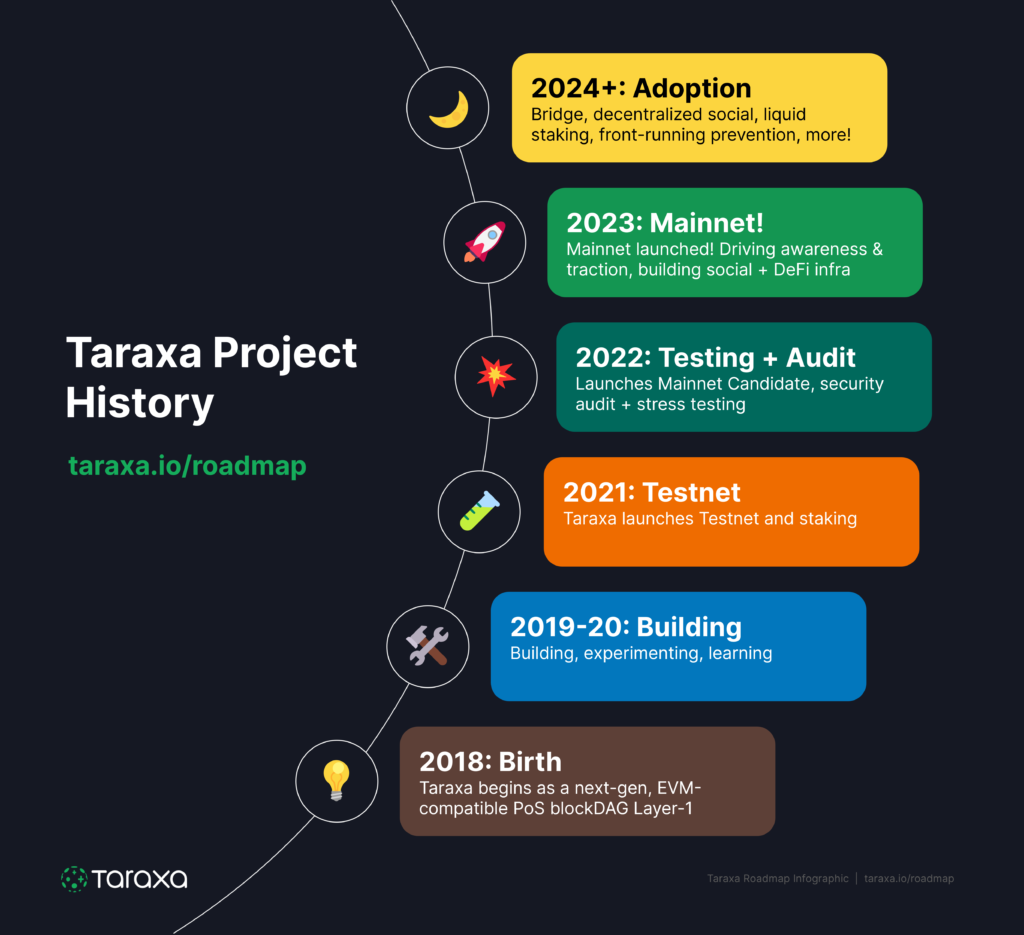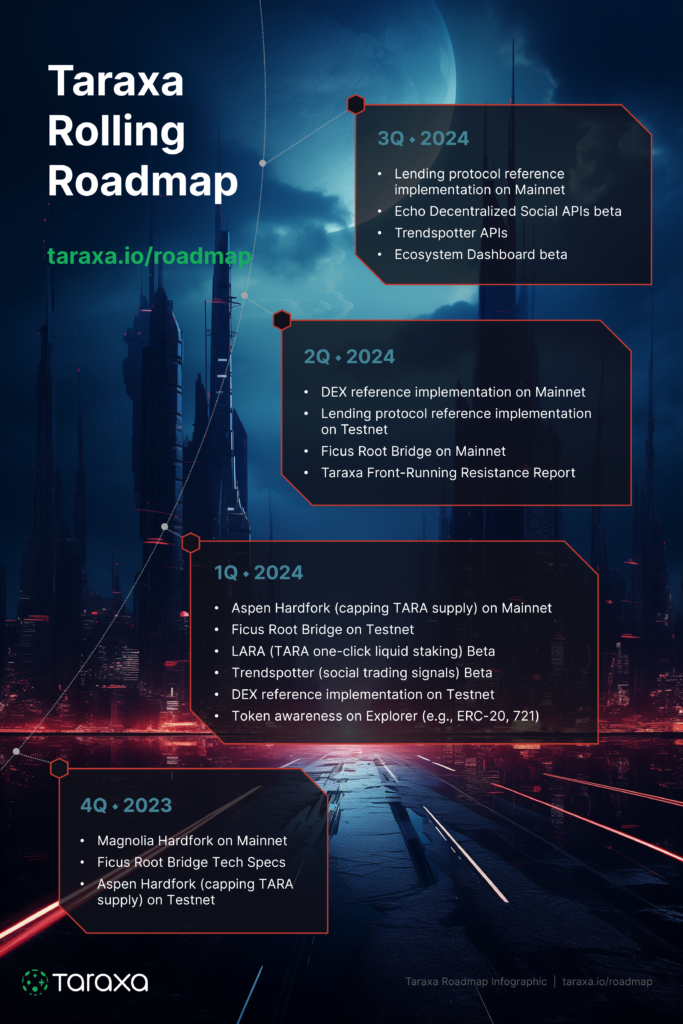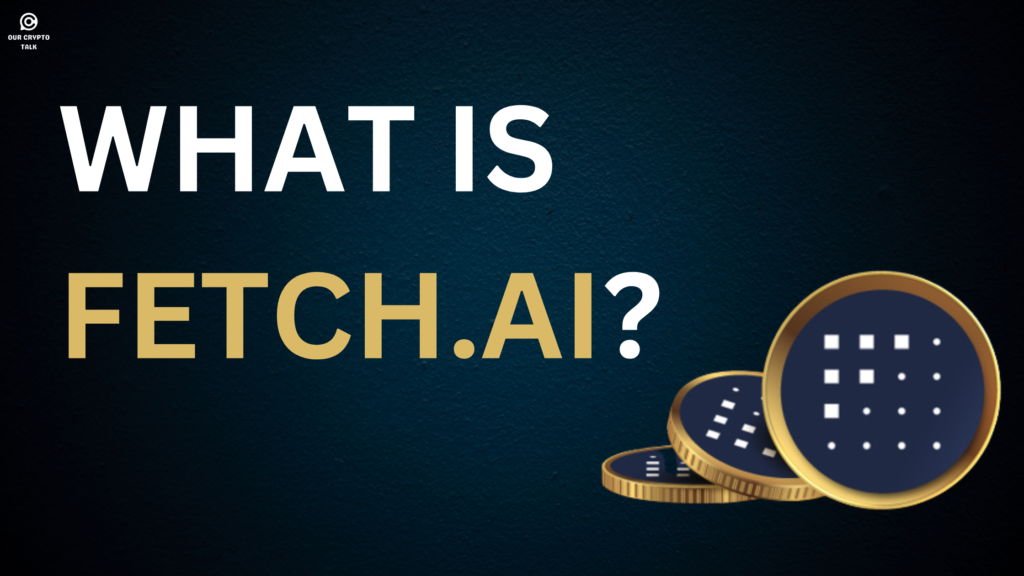Introduction to $TARA
Taraxa stands as an EVM-compatible smart contract platform, rooted in t-Graph consensus and harnessing blockDAG technology, featuring numerous groundbreaking technical advancements never seen before in the industry.
Taraxa employs its distinctive t-Graph consensus mechanism, integrating blockDAG, anchor chain, and asynchronous PBFT, enabling the scalability of blockchain technology without compromising security or decentralization.
Features of $TARA :
- EVM Compatible: Taraxa is EVM compatible, allowing you to deploy your ethereum dApps within minutes.
- Low cost transactions.
- No network congestion: With a throughput of 5,000 transactions per second (TPS), nearly instantaneous transaction inclusion, sub-second block time, and achieving True Finality in just 3.7 seconds.
- Truly decentralised: Truely permissionless network where anyone can be a validator – it even runs on a Raspberry Pi!
History and Mission of $TARA
Established in 2018 by a duo of Stanford Engineers, Taraxa unveiled its mainnet on April 3, 2023. Since then, it has steadfastly cultivated awareness and market momentum, garnering extensive acclaim for its advancements atop the next-generation blockDAG architecture.
Noteworthy achievements include being the first to integrate Native EVM in blockDAG, pioneer Proof of Stake (PoS) in blockDAG, introduce Dynamic blockDAG Proposal Rate, and achieve True Finality within blockDAG.

Taraxa aims to democratize reputation by tracking informal transactions.
The Taraxa public ledger platform purpose-built for audit logging of informal transactions, agreements, and data. In the short term, it offers immediate operational value to users by minimizing the amount of confusion and disputes. In the long term, it enables financial value by deriving quantifiable and verifiable reputation from these informal transactions which enables non-collateralized financial instruments over DeFi.
Future and Roadmap of $TARA
Q1 2024
- Aspen Hardfork (capping TARA supply) on Mainnet
- Ficus Root Bridge on Testnet
- LARA (TARA one-click liquid staking) Beta
- Trendspotter (social trading signals) Beta DEX reference implementation on Testnet
- Token awareness on Explorer (e.g., ERC-20, 721)
Q2 2024
- DEX reference implementation on Mainnet
- Lending protocol reference implementation on Testnet
- Ficus Root Bridge on Mainnet
- Taraxa Front-Running Resistance Report
Q3 2024
- Lending protocol reference implementation on Mainnet
- Echo Decentralized Social APIs beta
- Trendspotter APIs
- Ecosystem Dashboard beta

Taraxa’s L1 Tech
Taraxa presents a solution aimed at overcoming the tradeoffs outlined in Vitalik’s trilemma, leveraging a distinctive block DAG topology within an inclusive protocol framework.
Unlike single-chained topologies, this approach allows for significant scalability while maintaining security and decentralization. Traditional PoW is replaced with a fair and efficient proposal mechanism, utilizing a combination of VRF and VDF algorithms to replicate PoW’s key attributes with minimal environmental impact.
Additionally, Taraxa introduces asynchronous and immediate finality to prevent transaction reversals, optimizes the transactional layer around the VM to enhance throughput, and incorporates speculative execution to support stateless transactions, such as data anchoring of informal transactions, thereby meeting diverse application needs.
The $TARA Token
Utility
Transaction Fees: Taraxa’s token holders have the option to utilize the token to initiate and cover the processing costs of transactions. These transaction fees are subsequently distributed to the validators within the network. Further details on transaction fees can be found in the Rewards section.
Validator Eligibility: Taraxa token holders retain the ability to stake their tokens through bonding, qualifying them to become eligible validators within the network. These validators are entrusted with processing the network’s transactions and upholding its overall security and integrity. To demonstrate dedication to the system and ensure service standard assurance, users must furnish a specified amount of Taraxa tokens as a security deposit before engaging in mining activities for the network’s benefit.
The criteria for validator eligibility will be established at the network’s launch and may be subject to alteration through stakeholders’ voting. Generally, there will be minimum requirements for staking and/or delegation to a specific node to participate in consensus. However, the threshold will be maintained at a low level to encourage maximum participation. Additionally, there will be a cap on the amount of tokens staked and/or delegated to a single consensus node to prevent excessive concentration (centralization) of stake in any particular node.
Tokenomics
Total Supply: 10Billion
Circulation: 3,881,701,871
Staked: 2,119,747,397
Market cap: $51,421,564

Final Words
$TARA seems to be a very promising project right now using cutting edge tech to solve problems in the web3 space. There is a whole lot of hype surrounding the AI space as well which Taraxa is looking to leverage in 2024 so the future does seem bright for $TARA going into the bull run.
If you want to read up more about the project check out their official documentation here. For reviews on other projects, please check out our blog page!



